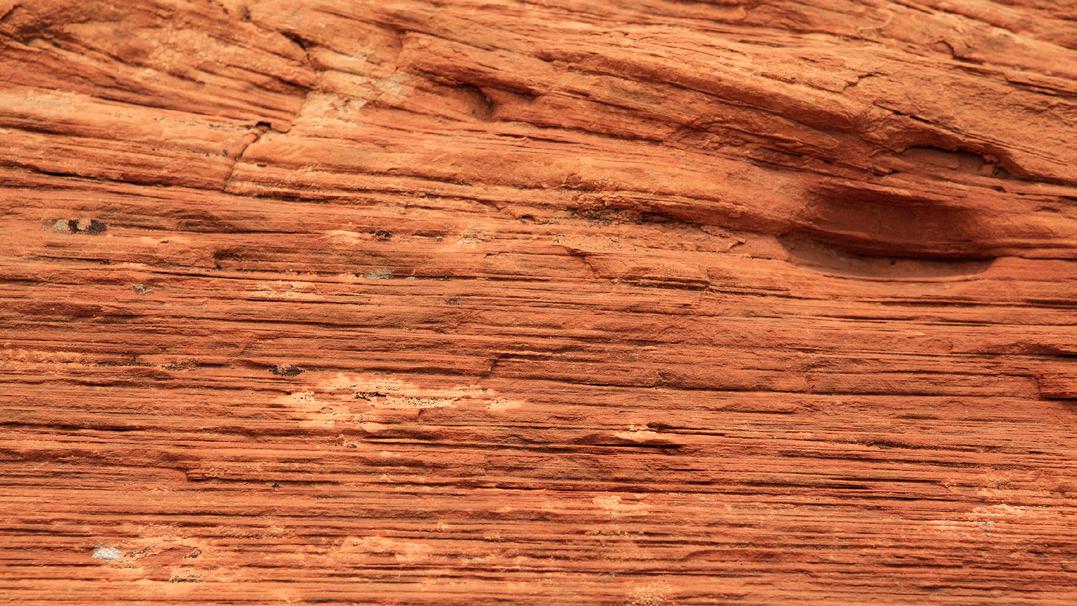Newsletter of the Rocky Mountain Association of Geologists





Street, B1, Denver, CO 80202 •
The Rocky Mountain Association of Geologists (RMAG) is a nonprofit organization whose purposes are to promote interest in geology and allied sciences and their practical application, to foster scientific research and to encourage fellowship and cooperation among its members. The Outcrop is a monthly publication of the RMAG.
PRESIDENT
Mike Tischer mtischer@gmail.com
PRESIDENT-ELECT
Matt Bauer matthew.w.bauer.pg@gmail.com
1st VICE PRESIDENT
Lisa Wolff lwolff@bayless-cos.com
1st VICE PRESIDENT-ELECT
Nate La Fontaine nlafontaine@sm-energy.com
2nd VICE PRESIDENT
Jason Eleson jason@geointegraconsulting.com
2nd VICE PRESIDENT-ELECT
Ali Sloan ali@sloanmail.com
SECRETARY
Drew Scherer flatirongeo@gmail.com
TREASURER
Holly Lindsey hrlindsey@bafatoy.com
TREASURER-ELECT
Astrid Makowitz astridmakowitz@gmail.com
COUNSELOR
Steve Crouch scrouch@whiteeagleexploration.com
Rates and sizes can be found on page 3. Advertising rates apply to either black and white or color ads. Submit color ads in RGB color to be compatible with web format. Borders are recommended for advertisements that comprise less than one half page. Digital files must be PC compatible submitted in png, jpg, tif, pdf or eps formats at a minimum of 300 dpi. If you have any questions, please call the RMAG office at 720-672-9898.
Ad copy, signed contract and payment must be received before advertising insertion. Contact the RMAG office for details.
DEADLINES: Ad submissions are the 1st of every month for the following month’s publication.
The Outcrop is a monthly publication of the Rocky Mountain Association of Geologists
DESIGN/LAYOUT: Nate Silva | n8silva.com
EXECUTIVE DIRECTOR
Bridget Crowther bcrowther@rmag.org
OPERATIONS ASSISTANT
Kimberly Burke kbure@rmag.org
LEAD EDITOR
Nate LaFontaine nlafontaine@sm-energy.com
CONTRIBUTING EDITORS
Elijah Adeniyi elijahadeniyi@montana.edu
Marlee Cloos marlee.cloos@bpx.com
Danielle Robinson danielle.robinson@dvn.com
WEDNESDAY NOON LUNCHEON RESERVATIONS
RMAG Office: 720-672-9898 staff@rmag.org or www.rmag.org




MEMBERS
EVENT ATTENDEES
WEBSITE VISITORS
OUTCROP READERS
COMMUNITY CONTACTS
EMAIL SUBSCRIBERS
IN 2023 YOUR SUMMIT SPONSORSHIP DOLLARS SUPPORTED: 1,200 2,000 8,000 8,500 5,000 3,500
NETWORKING EVENTS
CONTINUTING EDUCATION EVENTS
FIELD TRIPS



We greatly appreciate every Summit Sponsor and Event Sponsor that has contributed to RMAG over the last year. We could not exist without your support
The Rocky Mountain Association of Geologists celebrated a year of remarkable achievements, bringing together a global community of over 300 geologists for the Helium Conference for one of the first events exploring Helium production from exploration to processing. Monthly Women's Coffee, Membership Happy Hours, and thematic luncheons provided a supportive networking environment. In these gatherings, experts delved into diverse subjects, with topics that spanned from landslides to the intricate geology of the Permian Basin. RMAG also offered classes on oil and gas property valuation, enriching the skill set of members. A core workshop facilitated hands-on learning, and field trips to quarries, crater impacts and other geologic marvels ignited the spirit of exploration. Notably, the association extended its community impact through outreach at community festivals and classrooms across the Denver Metro area, emphasizing our dedication to advancing geological understanding and appreciation.
2024 brings new opportunities for RMAG Your sponsorship dollars will help RMAG bring to fruition an extensive calendar of continuing education opportunities, an exciting Field Trips season, and a dynamic list of luncheon speakers on topics ranging from the state of the industry to hydrogen and more. These dollars will allow RMAG Members impact the next generation at outreach events throughout the community and provide opportunities for the geoscience community to connect and build their network.
Your sponsorship dollars will also support our excellent publications including the monthly Outcrop newsletter and the quarterly Mountain Geologist journal We recognize your financial commitment with inperson signage, and website and publication advertising, as well as through social media before each online event. With a LinkedIn group of almost 3000 members, we make our sponsors visible to the geoscience community for both virtual and in person events
Thank you to those who are already a Summit Sponsor, we look forward to your continued support in 2024. If you are not already a sponsor, please look at the many complementary benefits included with the sponsorship levels. If our annual sponsorships don't make sense for your company, or you want to sponsor something specific, ask about our single event sponsorship opportunities. Please feel free to contact our staff with questions about sponsorship by email: bcrowther@ rmag.org or by phone at 720-672-9898 ext. 102
We and the staff of RMAG thank you all for your continued support and look forward to seeing you in 2024.
Michael Tischer Bridget Crowther 2024 RMAG President RMAG Executive Director

12 months of Outcrop advertising: To receive 12 full months, company logos and ad art must be received no later than the 20th of the month in which you register.
as part
for all
all

Payment Options
All sponsor benefits event tickets follow RMAG event registration deadlines. All benefits end 12 months after registration.
RMAG 2024 ANNUAL SUMMIT SPONSOR OPPORTUNITIES
Platinum Sponsor Gold Sponsor Silver Sponsor
Summit Sponsorship benefit term is for 12 months! Specify type of payment on signed form, and send logo and advertisements to staff@rmag.org
Company:
Company Representative:
Address:
City: State: Zip Code:
Phone:
Email:
Payment Method: Credit Card ACH Check
Credit Card Information:
Select Card: AMEX Mastercard VISA Discover
Name as it appears on Credit Card:
Credit Card #:
Expiration Date: Security Code:
Signature:
ACH: contact the RMAG office at staff@rmag.or for directions
Mail Checks payable to RMAG:
Rocky Mountain Association of Geologists (RMAG)
730 17th Street, B1 Denver, CO 80202
RMAG events are subject to change. Cancellation or rescheduling of events does not give the sponsor the right to refund. Summit Sponsors will receive benefits at any new events added into the RMAG schedule.
Thank you for your generous support!
P: (720)672-9898 staff@rmag.org www.rmag.org

730 17th Street, B1 Denver, CO 80202
Welcome to the March 2024 edition of The Outcrop! The February Board of Directors meeting took place on Wednesday, February 21st at 4:00 pm online. All board members were present except three. We have started the year strong with an increasing membership base and good attendance at our January and February events. January was a good month for us financially and we are excited to keep that momentum up in the future. The Finance committee is planning to present an overview of postcovid financial recovery at the March Luncheon. A key theme throughout the board meeting was the diverse and exciting set of events we have planned for 2024 across the scope of our committees. Some highlights we are working to incorporate into our 2024 schedule include: new luncheon and short course topics spanning oil & gas, data science, new energies, critical minerals, and planetary geology; social events like disc golf, a murder mystery party, and “geology of –“ (i.e. wine, whiskey,
and beer) series; a full calendar of outreach opportunities with our academic partners that serve all students from elementary to college-aged, and many exciting On-the-Rocks field trips beginning in late-March. We are also excited to announce that we have secured permits for a 14-day Grand Canyon rafting trip in 2025, stay tuned for more information on trip dates, logistics, and how to place a deposit, as this trip will most certainly sell out!
Lastly, if you are curious about giving back to the local geoscience community through your volunteer time with RMAG, the Continuing Education Committee is seeking a couple new members to help plan and organize luncheons, short courses, and workshops. If you are interested, please reach out to Jason Eleson, Bridget Crowther, or any Board Member, contact information is available on page 3 of this issue.
Hoping you all have a marvelous March and enjoy this publication of the Outcrop!








Dear RMAG Members,

Now that I have your attention, I’d like you to join me on a journey beyond Earth. But don’t worry, we will stay in the neighborhood. When you read this, we will be about a month out from one of the most spectacular events the solar system has to offer for us on Earth. Most of you already know this. For the uninitiated, on April 8th portions of the continental US will be witnessing a most unusual sight, a perfect alignment of Sun, Moon and Earth – a total solar eclipse. The path of totality will cross several states from Texas to Maine. If you live in Colorado or any other Rocky Mountain state, however, you will have work to do. Similar to the annular eclipse we just had last year which centered in Utah and New Mexico, the upcoming total eclipse will only be partial for folks living in Colorado, with a 65% obscuration in Denver, less so to the north and west.
So, your mission, should you choose to accept it, will be to fly, drive, or crawl if you have to, to a place that’s within the path of totality. Trust me, if you have never seen one of these celestial events you are missing out. This should be on everybody’s bucket list. Oh, you’ve seen the one in 2017, you say? Drove to Wyoming. No need to see another one? Well, I urge you to reconsider because this one is extra special. It’s The Empire Strikes Back of eclipses. It will
be longer (by almost 2 minutes) and darker than its predecessor. But maybe most importantly, the Sun will be near its solar maximum and the solar corona may put on a show for us once it becomes visible during totality that will make the 2017 eclipse blush.
Why am I telling you this? Isn’t this supposed to be a geoscience publication? I could argue that an eclipse involves Earth, the entire Earth, and therefore a point can be made that there is a geology component to this event. True, but that’s not why I wanted to talk about it. My rationale for discussing the eclipse is broader. I want you to do the following. When you have made it to your preferred viewing location, parked your car, put on your special eclipse viewing glasses, and watched the Sun slowly

disappear until there is nothing left but a bright ring, while your surroundings get darker and noticeably colder, while the wildlife around you falls silent, ask yourself: how did our ancestors feel when they experienced this?
How would you feel if something like this happened to you without warning, without any tools or knowledge that could help you make sense of it? Would you seek comfort in your rituals or be scared to death, or both? Today, we all reap the benefits of a science education, something our ancestors did not have. We trust in facts and look for data to support them. When we see something we can’t explain, science will give us a framework to inquire about it. We may need to collect more data or we may need to run more experiments, but in the end, we know we will find a law or principle that will explain the observed. Even in cases where an explanation seems beyond reach, we are sure that science still applies and explanations exist. This framework helps us understand and appreciate the world around us in a
way our ancestors could not. I bet you have all been on hikes in the mountains and got very excited when you recognized a rock or were able to understand how the landscape you saw formed. This fascination for nature and its inner workings connects all of us here at RMAG. It’s why most of us became geoscientists in the first place. And this deep appreciation for our planet exists because science exists.
On April 8th, when you look up in the sky and see the sun disappear, I want you to think about one more thing. Bask in the knowledge that what you see is the result of a cosmic fluke: the Sun being about 400 times larger than the Moon but also being about 400 times farther away. Realize how lucky you are to be able to see this; as the Moon slowly moves away from the Earth, there will be a point in the distant future where total eclipses will become impossible. Your scientific knowledge might take the magic out of it but will make the event even more magical – the reward of a science-based view of the world. Enjoy the show! And remember, the world is not going to end, not on that day anyway.

• https://www.msn.com/en-us/travel/ news/this-is-where-you-can-see-the2024-total-solar-eclipse-across-the-us/ ar-AA1cn4iG#fullscreen [source of map displayed here]
• https://www.space.com/ solar-eclipses-all-ring-shaped-future
• https://science.nasa.gov/eclipses/ future-eclipses/eclipse-2024/

Join us for a ‘virtual’ field trip to the town of Marble and the quarry location for Colorado’s ‘State Rock,’ the Yule Marble. Rob Diedrich from the On the Rocks Field trip committee will discuss the geologic history of this iconic formation, examine historic and modern-day quarry operations, and view some of the iconic buildings constructed with this stone. Grab your favorite beverage and join us for a ‘happy hour’ online field trip to Colorado’s Yule Marble.

In a small patch of sun-scorched badlands in western Montana, the ground is speckled with black chips of dinosaur eggshell. Nearby lie the bones of large duck-billed dinosaurs called Maiasaura. Not far away, one can discover the giant tracks of these dinosaurs and even the fossilized remains of their droppings, known as coprolites. This area is known as the Beatrice R. Taylor Paleontology Research Area, preserving one of the most spectacular dinosaur localities on the planet. For Museum of the Rockies’ (MOR) Paleontology Field Crew, it marked the beginning of their 2023 fieldwork season, encompassing over ten weeks of exploration in outcrops from the Age of Dinosaurs.
“Every summer, we uncover things that no human has seen before, with the potential to shape our understanding of life on this planet,” says Dr. John Scannella, a Montana State University (MSU) alumnus and MOR’s John R. Horner Curator of Paleontology. In 2023, a team of over twenty undergraduate and graduate
students from MSU made these discoveries. For many crew members, this summer marked their first experience excavating dinosaur fossils.
“Providing students with hands-on fieldwork opportunities is a significant part of our mission,” says MSU alum Lee Hall, MOR’s Paleontology Lab and Field Manager. “We are training the next generation of paleontologists and equipping them with practical life skills. An experience like this can kickstart an entire career in the sciences, just as it did for me.”
Hall first ventured into the field with MOR as a high school student more than 20 years ago. Later, while pursuing his undergraduate degree in MSU’s Department of Earth Sciences, he made a groundbreaking discovery - the jaws of the smallest Tyrannosaurus rex ever found. Today, he leads teams of students in uncovering new discoveries.
This summer’s field season also included the uncovering of the bones of a large dinosaur in central Montana. Just a few years ago, MSU alum Kevin
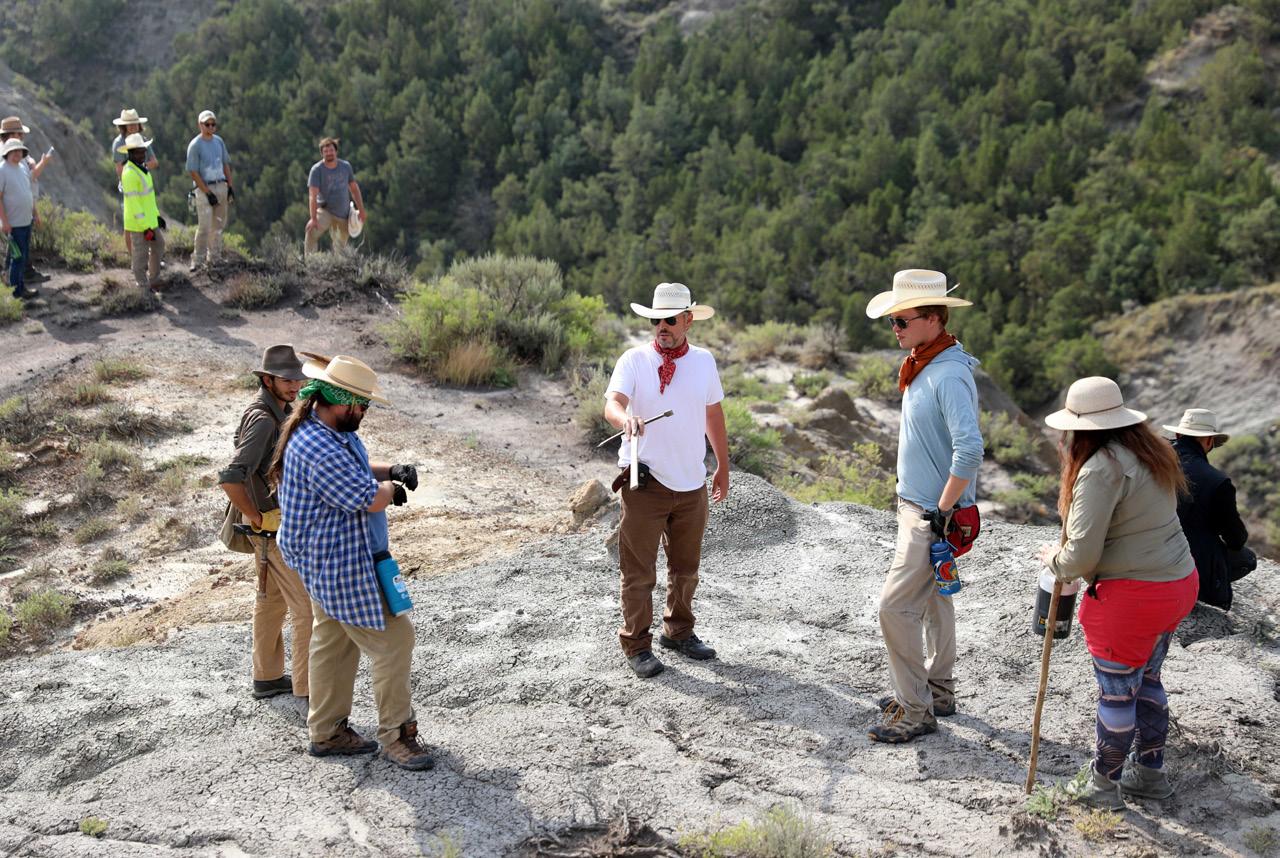

ABOVE: MOR Paleontology Lab and Field Manager Lee Hall discusses the course of action with members of the 2023 field crew in Makoshika State Park.
Conners reported finding dinosaur bones in his backyard near Lewistown. MOR has been actively excavating the fossils of this prehistoric creature, which lived over 50 million years before the time of the T. rex.
The crew also spent several weeks working in and around Makoshika State Park in Glendive, Montana. Makoshika is Montana’s largest state park and contains extensive exposures of the Hell Creek Formation, the geologic unit that famously represents the end of the Age of Dinosaurs in Montana. The crew was joined by Dr. Naoki Ikegami, Curator of the Mifune Dinosaur Museum, one of MOR’s sister museums in Japan. Within Makoshika’s canyons, the team excavated and collected a plethora of new fossils including Triceratops, duck-billed dinosaurs, a large turtle, and ancient plants. More exciting sites are in progress and the new finds are currently under preparation in MOR’s Fossil Preparation labs. Reflecting on the field season, MSU undergraduate student Mikayla Blacksher says, “At
first I was on the fence about it, but once I went out into the field, I knew that this is what I want to do.”
The museum’s preparation labs are keystone facilities for MSU’s paleontology research where students are trained to use modern conservation techniques to extract fossils from the surrounding rock. Students working in the labs this fall are the first to do so in nearly two years, following an extensive renovation project. Thanks to support from generous donors, including the WEM Foundation, MOR’s labs were recently upgraded with state-of-the-art dust extraction systems, new microscopes, and new preparation tools. “We are incredibly grateful for the financial assistance provided for this renovation,” says Hall. “Their generous support has allowed us to modernize every aspect of our lab facilities, including vital dust collection systems. Students can now work in fossil preparation labs that are safer and more spacious.”
Once prepared, fossils are moved to collections,





where students learn to identify, catalog, digitize, and rehouse specimens for research access. MSU alum and MOR’s Paleontology Collections Manager-Registrar Eric Metz, says “Students volunteering in collections gain experience working directly with thousands of different types of fossils, ranging from giant dinosaur bones to tiny mammal teeth that can fit on the head of a pin.”
A few students work directly with the museum’s Paleo Histology Lab Manager, Ellen-Thérèse Lamm. Lamm has spent over thirty years cutting into the bones of dinosaurs and other ancient creatures in the Gabriel Histology Lab, preparing the fossils to be studied in high detail under microscopes. Over the years, she has trained MSU students in thin-sectioning techniques, and many of these students have subsequently established their own histology labs. “Students also learn database skills needed to manage the many digital and tangible objects produced from research projects as well as how to operate our polarized-light microscope system to capture remarkable scientific images that are shared with investigators across the globe,” says Lamm.
Certain fossils are being prepared for exhibitions that showcase the incredible creatures that once inhabited this region. In a collaborative effort between MOR’s Paleontology and Exhibits Departments, recent MSU graduate Michael Serio and Student Exhibits Assistant Calen Cavallaro, from the Cooperstown Graduate Program, spent the summer working on an exciting 3D scanning and printing project. Their inaugural task was to capture 3D scans of more than a hundred elements from the skeleton of Troodon, a relative of the famous Velociraptor
The skeleton of Troodon is the first dinosaur to undergo 3D printing for inclusion in MOR’s upcoming “Cretaceous Crossroads” exhibit, scheduled to open in the Siebel Dinosaur Complex in the summer of 2025. Scannella notes, “There are so many exciting things going on in MOR’s Paleontology Department right now, and MSU students play a major role in all of it.” Hall shares, “We have already started planning the 2024 field season as there are always discoveries waiting in the outcrop. We want to put MSU students there so they can find them. Who knows what they will uncover next?”
Museum of the Rockies is a distinguished cultural and natural history institution situated in Bozeman, Montana. The museum operates as an independent 501(c) (3) non-profit organization and a college-level division of Montana State University. The museum proudly carries the distinction of being a Smithsonian Affiliate and serves as a vital repository for state and federal fossils. The American Alliance of Museums has bestowed accreditation upon MOR, recognizing its commitment to maintaining the highest standards of excellence. Among an estimated 33,000 museums nationwide, MOR is one of the privileged 1,096 institutions to hold this prestigious distinction.
Renowned worldwide, MOR is hailed as a premier destination for those seeking an immersive experience in the cultural and natural history of the Northern Rocky Mountain region. Its remarkable collection of dinosaur fossils, including the fully-mounted Montana’s T. rex skeleton, stands as a testament to its status as a leading institution in paleontological research and exhibition.

Speaker: Abdulah Eljalafi
Date: March 6, 2024 | 12:00 pm - 1:00 pm

Presenter: Abdulah Eljalafi
Shallow water carbonate platforms of the western Gulf of Mexico are among the best archives of global change during peak greenhouse conditions on Earth. Detailed documentation of the El Doctor platform, and comparison of this record with equivalent systems across the Western Gulf of Mexico, reveals regionally variable development and response to globally synchronous eustatic and paleoenvironmental forcing mechanisms. This variability suggests that regional differences in ocean circulation and tectonic drivers play an important role in shaping carbonate platforms. Therefore, detailed sequence stratigraphic analyses across these platforms are required to accurately evaluate regional vs. global drivers. This field-based study explores the isolated El Doctor carbonate platform in central Mexico, using a 7.5 km-thick collection of measured sections on both open ocean and craton-facing margins. Measured sections are supplemented by Unmanned Aerial Vehicle imagery and high-resolution panoramas (e.g., Gigapans) far platform-wide delineation of strata geometries and sequence correlation. The comprehensive dataset permits the

establishment of a reference- locality for Cretaceous Isolated carbonate platforms of central Mexico, and the development of a sequence stratigraphic framework that notes periods of aggradation, progradation, and retrogradation, punctuated by drowning near end-Albian time. Three composite sequences are presented in this study, which record platform-wide expansion followed by progressive drowning and carbonate factory shutdown coinciding with the timing of Ocean Anoxic Event id. The resulting stratigraphic framework sheds new light on the spatiotemporal variability in platform development and demise. The timing of carbonate factory shutdown at El Doctor is synchronous with land-proximal and land-attached platforms in northern Mexico (Coahuila) and southern Texas (Comanche) nearing the timing OAE1d onset. In contrast, the larger isolated platforms in central (Valles San Luis and Tuxpan) and southern (Guerrero) Mexico continued carbonate accretion during the Cenomanian until the onset of OAE2, indicating variable platform responses to changing oceanographic conditions in the region.
ADULAH ELJALAFI, PH.D. received his doctorate from the Jackson School of Geosciences at The University of Texas at Austin in August of 2022. Today he is a Geoscientist for Ovintiv.

This first trip of the 2024 Field Trip season highlights the expertise of two prominent geologists and speleologists, Mark Maslyn and Harvey DuChene. We will begin by visiting several springs in Manitou Springs , a lecture by the cave ’ s historian and comparisons with cave hypogene speleogenesis in the Guadalupe Mountains. The culmination of the trip will be a private tour of the cave by Mark Maslyn who has mapped portions of the cave and led technical trips for forty years.


Speaker: Karen Lechtenberg
Date: April 3, 2024 | 12:00 pm - 1:00 pm

Presenter: Karen Lechtenberg, Carbon America
Carbon Capture, Utilization, and Storage (CCUS) represents an emerging industry that leverages on the existing expertise of geoscientists in subsurface characterization and evaluation. These projects offer a promising solution to mitigate emissions across various industries. However, the journey from project inception to regulatory approval, especially regarding Class VI permit construction and submission, presents numerous challenges and complexities owing to
Karen Lechtenberg serves as the Director of Geoscience at Carbon America, a leading Carbon Capture and Sequestration company based in Colorado. With a decade of experience in drilling operations and reservoir characterization, she brings a comprehensive and versatile skill set to the subsurface team. Prior to her role at Carbon America, Lechtenberg held geology positions at Ovintiv (previously Encana), where she focused on projects in the Rocky Mountain and West Texas regions.
the unique nature of each project and the novelty of the process. This presentation discusses the evaluation of CCUS project sites, drawing upon the valuable experience gained from a DJ Basin Region 8 project, alongside insights from similar projects nationwide. It will explore lessons learned throughout the phases of project scoping, detailing the nuanced intricacies encountered during Class VI permit submission.
In her role at Carbon America, Lechtenberg has been instrumental in designing and leading a multidisciplinary team for the execution of stratigraphic science well programs. Her expertise extends to the integration of collected data into 3D geocellular models and injection simulations, ensuring compliance with EPA Class VI requirements. Notable achievements include her role in Carbon America’s first stratigraphic well, culminating in the submission of the inaugural Class VI permit in EPA Region 8 and Colorado. In collaboration with the Colorado School of
Mines and Los Alamos National Lab, the Carbon America team is also executing a $32.6 Million CarbonSAFE grant in southern Colorado.
Lechtenberg holds a Bachelor of Science and a Master of Science in Geology from the University of Kansas. Her academic specialization lies in carbonate sequence stratigraphy, highlighted by her research on the Build-and-Fill Geometries of the Lower Ismay (Pennsylvanian) Carbonates in the Paradox Basin, Utah, USA.


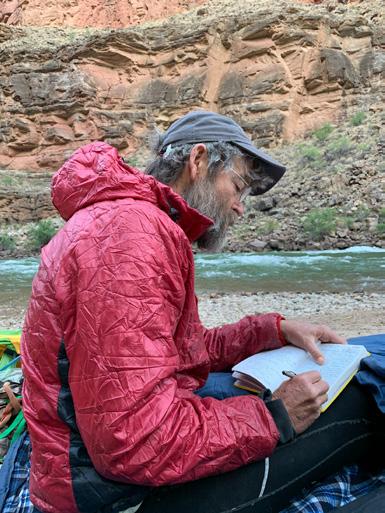
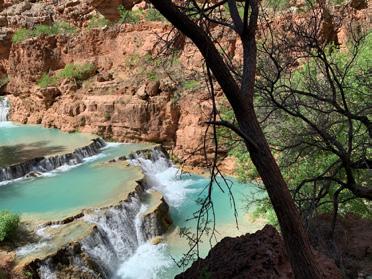

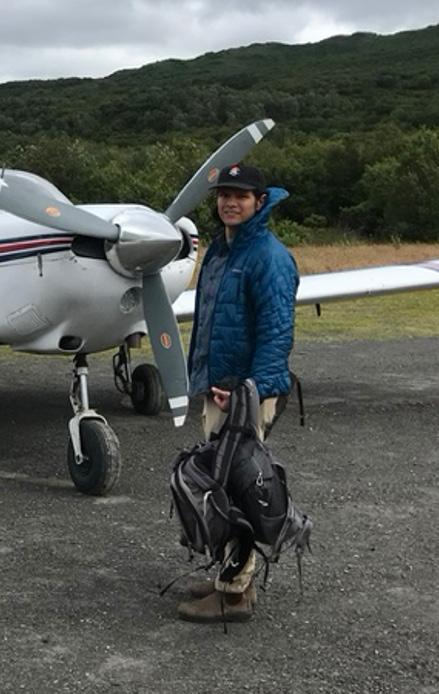
I began my undergraduate studies as a physics major. By chance, I took a general education course titled, “Earth: Evolution of a Habitable Planet” at the University of Arizona. During that course, I found a tangible application to continue in physics, as well as engage with two of my lifelong passions: the outdoors and the mechanics of the natural world around me.
I grew up in a small town called Sierra Vista, Arizona. As the name suggests, I was surrounded by mountainous landscapes in every direction. I have always been fascinated with this part of the American Southwest, even before I understood the geology that surrounded me.
My first job was technically setting up jumping castles and delivering party supplies during high school. However, I began my career in research at the University of Arizona Laboratory of Tree-Ring Research. I worked as an undergraduate research assistant, taking measurements of tree-ring widths in samples from around the world. The aim of the studies was to reconstruct climate records and inform water usage decisions in drought-susceptible communities. I also served as volunteer research assistant in the Department of Geosciences Satellite Geodesy Lab. There I learned the application of GPS geodesy to study tectonic motions and related crustal deformation.

In the latter two summers of college, I was fortunate to participate in two internships with the NSF-funded Research Experience in Solid Earth Sciences for Students (RESESS). I first studied soil moisture modelling at NOAA. My second summer was focused on earthquake seismology. My mentor that summer, Prof. Anne Sheehan, eventually became my PhD advisor at the University of Colorado. This undergraduate research experience was designed to promote underrepresented minorities in geoscience. My participation in the program was an important factor in my professional progress to date. While in graduate school, I also studied earthquake detection enhancement at the USGS National Earthquake Information Center (NEIC), which provided results for the final chapter of my dissertation.
I currently serve as the seismologist for the Colorado Geological Survey. I suppose I fill multiple
roles here. My primary responsibility is to maintain the statewide seismograph network for monitoring earthquakes. This entails going in the field to service the hardware, as well as keeping track of network operation remotely. We currently have nine stations that are constantly streaming data to the USGS National Earthquake Information Center for constant monitoring. I also utilize public data services to download and analyze legacy data in more focused studies to detect where microseismicity may be happening. This helps to inform decisions about where I should install additional stations in our growing network. I assist in other smaller-scale efforts such as understanding post-fire debris flows and mitigation planning for future carbon capture operations. I participate heavily in public outreach, answering questions from citizens and designing informational materials for a variety of ages. My favorite experience so far has been participating in youth education demonstrations. I teach at schools about earthquakes using digestible exhibits and table-scale earthquake analogs. I get to show students that this field of work is a fun and exciting possibility to pursue as a career.
The best career lesson that I have learned so far is to always be ‘scanning the horizons’ for potential opportunities. Staying aware and doing the work on applications and networking can take you to some amazing and unexpected places. It has for me. For example, I have been fortunate to travel to places like Alaska, Canada and Switzerland. I even spent a month at sea deploying ocean-bottom seismometers along the Aleutian coast. It helps that life as a geoscientist involves a lot of fieldwork. I’ve learned that it pays to take chances when opportunity arises.

If I could go back in time to become something other than a geophysicist, I would study computer science. I would hone my skills as a programmer/ software engineer. It’s a big part of my work to be comfortable with computing, and I also am fascinated with tinkering with the hardware. No matter what, opportunities are endless if you can write code to solve research problems.
Yes, I have an adorable French Bulldog! When my partner and I took over his care, his name was “Cash.” We found it more fitting to start calling him
RMAG’s Publications Committee is featuring a monthly Member Corner. We hope you’ll enjoy learning about the diverse community of Earth scientists and wide variety of geoscience disciplines that comprise our membership. If you would like to appear in an upcoming column, or if there is someone you would like to nominate, please contact staff@rmag.org
“Geocache.” He also responds to quirkier nick names like “Stinky” and “Mr. Piglet.” He snores a lot and sounds like a pig. He’s a wonderful nugget of joy in our lives.
Music! Both playing guitar, singing and listening to records to unwind. I love rock music, but I dip into many other genres as well. My partner and I have a healthy and growing vinal collection. Lately I have been focused on playing Latin tunes on my classical guitar.
It’s a tie between dishes and laundry. They both drive me nuts. It’s a never-ending battle.
I would try to find my ancestral home planet. I don’t know its name, but I have a feeling it’s out there somewhere.
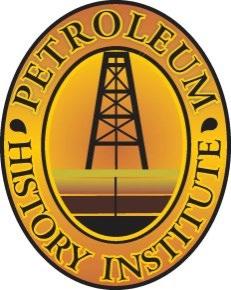
ABSTRACT DEADLINE: EXTENDED TO MARCH 31, 2024
2024 ANNUAL SYMPOSIUM AND FIELD TRIP
May 20-22, 2024 Canmore, Alberta, Canada


REGISTRATION AND EVENING RECEPTION
Monday, May 20, 2024
PRESENTATIONS – ORAL AND POSTER – Tuesday, May 21, 2024
Proceedings to be published in the 2024 volume of Oil-Industry History
The theme for the Symposium is Exploration in the Canadian Rocky Mountain Foothills: From Drilling the Bumps to Deeper Insights.
Papers on all aspects of the history of the petroleum industry in Canada and around the world are welcome.
We look forward to hearing from you.
FIELD TRIP TO TURNER VALLEY AND TO THE MUSEUM OF MAKING –Wednesday, May 22, 2024
HEADQUARTERS HOTEL – Chateau Canmore
Hotel info and event registration form are posted at www.petroleumhistory.org
ABSTRACTS BEING ACCEPTED NOW
Please send to Dr. Clinton Tippett at clintontippett88@gmail.com
QUESTIONS?
Contact Rick Green: vrgreen1@telus.net
This first trip of the 2024 Field Trip season highlights the expertise of two prominent geologists and speleologists, Mark Maslyn and Harvey DuChene. The trip begins with a visit to several springs in Manitou Springs to understand some of the geologic factors that have created both the springs and the Cave of the Winds. We will learn about cave dissolution through hypogenesis, hear a lecture from the cave’s historian, and marvel at the comparisons with cave hypogene speleogenesis in the Guadalupe Mountains. The culmination of the trip will be a private tour of the cave by Mark Maslyn who has mapped portions of the cave and led technical trips for forty years.
The defining theme of the trip is hypogenesis of both the springs in Manitou Springs and the Cave of the Winds (COW) (see Figure 1 for geologic setting) which is located adjacent to Williams Canyon. Hypogenesis is the process of carbonate dissolution by upwelling gases and fluids from the deep-seated subsurface.
Mark Maslyn maintains a long-term association with the Cave of the Winds (COW), has mapped much of the cave, and has recent publications examining hypogenic flow, hydrothermal dolomite, and paleokarst. Harvey DuChene has explored numerous caves in the US, Mexico, Europe, and Asia, and has been researching hypogene speleogenesis in the Guadalupe Mountains and the relationship to H2S in oil trapped in reservoirs of the Artesia Group in New Mexico. His work will be an interesting addition to discussions of COW and Colorado caves.
The trip will start with a quick tour of some of the

mineral springs in Manitou Springs. The trip leaders will explain the influence of fluids moving through the Pikes Peak granite to the intersection with the Ute Mountain Fault that sources the CO2. Flowing together through fractured and soluble carbonates, this combination of fluids and gases eventually encounters

surface waters to create a chemical mixing zone responsible for the cave formation. This process has been in play for 4.5 million years and continues today (see Figure 2, a schematic cross section).
After expanded discussions of the cave formation, the hydrodynamics of regional groundwater flow from Wyoming to west Texas, and a guest lecture by Richard Rhinehart, the Cave of the Winds Historian, there will be private tours of the cave illustrating the processes and concepts discussed earlier including: stratigraphic contacts of the three carbonate formations (see Figure 3), solutional feature types, evidence of ascending water flow, episodes of paleokarst development, speleothems (see Figure 4), and some entertaining stories from the past.
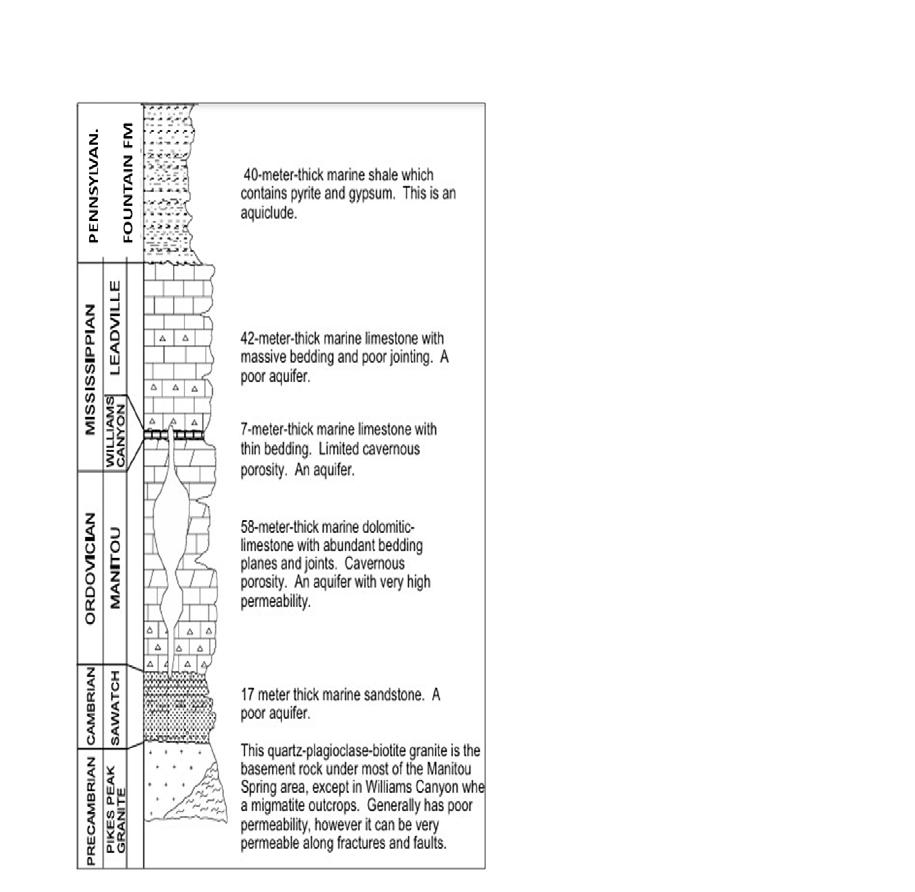


The Trustees of the RMAG Foundation are pleased to welcome Shawna Gilbertson as a new Foundation Board member. As the field of earth science broadens into many subspecialties, some of them relatively new, the importance of adding additional experience to the Board has become apparent. Many graduate student theses and dissertations submitted for Foundation scholarships have moved beyond traditional petroleum studies. Shawna’s expertise brings significant diversity that will allow the Foundation Board to evaluate emerging
MARCH 6, 2024
RMAG Luncheon.
topics and technologies more thoroughly.
Shawna is currently a Senior Geoscientist with The GeoIntegra Group in Denver where she is engaged in geothermal, hydrogen storage, CO2 storage, and other energy-related research. She has experience with carbon capture and storage (CCS), carbon capture, utilization, and storage (CCUS), geochemistry, geophysics, and a wide range of petroleum-related expertise in exploration, operations, and basin modeling.
Congratulations and thank you, Shawna, for joining the RMAG Foundation Board!
Speaker: Abdulah Eljalafi, Talk Title: “Rise and Demise of the Cretaceous Carbonate Platforms of the Western Gulf of Mexico.” In Person or Online. Denver Earth Resources Library, 730 17th Street, B1, Denver.
MARCH 6, 2024
RMS-SEPM Student Research Symposium.
3:30-5:00 PM.
MARCH 13, 2024
COGA Day at the Capitol 2024. Colorado State Capitol Legislative Services Bldg., 200 E. 14th Ave., Denver, CO.
MARCH 18-21, 2024
Continuing Education and Professional Development: Economic Evaluation and Investment Decision Methods.
Colorado School of Mines. Golden, CO.
MARCH 18-22, 2024
Continuing Education and Professional Development: Enhanced Geothermal Systems.
Colorado School of Mines. Golden, CO.
MARCH 21, 2024
RMAG Coffee Hour.
Little Owl-Tremont, 410 17th Street, Denver, CO. 10AM.
MARCH 26, 2024
RMAG Happy Hour.
Prost Denver Biergarten, 2540 19th Street, Denver, CO. 4-6PM.


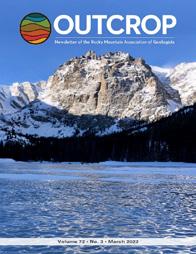




We invite you to contribute to the vibrant and dynamic Outcrop, where your geological discoveries can find a home among like-minded professionals. Whether you have a compelling geological story, ground breaking research, insightful book reviews, or something else looking for it’s geologic home, the Outcrop is the ideal space to share your expertise with the geological community. Our publication process ensures a swift transition from submission to publication, allowing your work to reach a global audience in a timely manner. Additionally, every published lead article is entered to win the Outcrop article of the year, and entered to win a free RMAG field trip.
Join us in fostering knowledge exchange and advancing the field of geology by considering The Outcrop as the premier outlet for your valuable contributions.
Contact the outcrop Editor Nate La Fontaine with your submission at nlafontaine@sm-energy.com


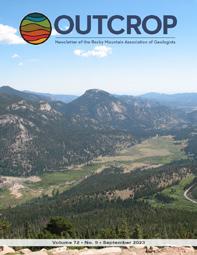



1st Vice President of RMAG | Senior Geologist, Borehole Image Specialists, P. O. Box 221724, Denver CO 80222 ron@bhigeo.com

 Beautiful dark green elbaite tourmalines swaddled in a froth of columnar aggregates of platy, lilac-colored lepidolite. From Urupuca, Mine, Minas Gerais, Brazil. The large elbaite is 45 mm in long dimension. Photo with permission from John Betts Fine Minerals
Beautiful dark green elbaite tourmalines swaddled in a froth of columnar aggregates of platy, lilac-colored lepidolite. From Urupuca, Mine, Minas Gerais, Brazil. The large elbaite is 45 mm in long dimension. Photo with permission from John Betts Fine Minerals
Lepidolite, K(Li,Al3)(Al, Si3)O10(OH,F)2 is a rare, pegmatite-derived light mica that is usually recognized by its lilac, pink or purple color and micaceous cleavage. Lepidolite is only found in lithium-cesium-tantalum (LCT) granitic pegmatites that are some of the most evolved igneous rocks on earth. Because of this mode of occurrence, lepidolite is often a supporting cast member to some of the most astounding mineral associates, including: beryl (aquamarine, emerald, and heliodor), tourmaline (pink and green elbaite), spodumene (kunzite, hiddenite and triphane), topaz and other prized minerals such as pollucite, columbite-tantalite and cassiterite. Lepidolite is an ore mineral of lithium, which is listed as a Critical Element by the USGS. Lepidolite – the lilac lithium mica!
Lepidolite is a 2:1 phyllosilicate (sheet silicate) comprised of stacked “ice-cream sandwiches” of TOT (tetrahedral-octahedral-tetrahedral) layers. The lepidolite structure is similar to that of muscovite (Nesse, 2004). T layers are mostly silica tetrahedra that share basal oxygens and “point” inward toward the sandwiched O layer. Variation in the proportions of octahedrally coordinated Li+ and Al3+ - in the center of the oreo sandwich - result in charge imbalances that are leveled by substitution of Al3+ for Si4+ in the T layers. K+ occupies a position between TOT sheets with some substitution by other cations (Na, Rb and Cs). The octahedral layer can also contain substitution by Fe2+, Fe3+, Mn and Mg (Nesse, 2004). Wenk and Bulakh (2004), indicate that the pink to lilac color of lepidolite is from included Mn, which is always present in trace amounts.
Lepidolite was named in 1792 by Martin Klaproth from the Greek lepidos (scale) and lithos (stone) (Mindat, 2024). Lepidolite is a light-colored phyllosilicate that belongs to the 2/m (monoclinic) crystal class. Lepidolite is rarely euhedral. When it does appear as well-formed crystals – and, in spite of monoclinic symmetry - lepidolite often appears to be hexagonal. Pseudohexagonal lepidolite is commonly seen as platy, foliar or even in botryoidal aggregates. (Johnsen, 2002, Klein, 2002). Aggregates can sometimes include stacked books of platelike crystals that look, well, scaly.
Lepidolite displays physical properties that are similar to many other minerals on the muscovite side

of the mica world. These include perfect cleavage on {001}, yielding transparent to translucent cleavage fragments that are flexible and elastic. Also, lepidolite displays low hardness (2.5 to 3), low specific gravity (2.8) and a sparkly pearly to vitreous luster that always seems to sparkle in the sun (Johnsen, 2002; Bonewitz, 2005). I tend to agree with Farndon and Parker (2011), who aver that “…lepidolite is perhaps the most attractive of all the micas.” (p. 233). Lepidolite is often lilac or pink, but it can also appear as colorless, red, purple, gray, white or yellow (Chang, 2002; Bonewitz, 2005). In some situations, pegmatitic lithian muscovite can be pink and nearby lepidolite can be white, requiring XRD analysis to distinguish species (Kelin, 2002).
Lithium-rich pegmatites derive -initially - from sedimentary source material. London (2017) explains that most Li-rich pegmatites start as clay minerals in marine shales that sponge up low ppm concentrations of Li from seawater. Li movement during subsequent tectonic compression, metamorphism, melting, fractional crystallization and pegmatite emplacement sometimes creates the rare conditions that mineralize

ABOVE: Additional view of the cover photograph zooming in on the platy columnar aggregates of lepidolite. Whitish color is light reflecting off of the mica cleavage. Photo used with permission from John Betts Fine Minerals
BELOW: Translucent single lepidolite crystal from Aracuai, Minas Gerais, Brazil. 7.5 cm in long dimension. Photo used with permission from John Betts Fine Minerals

Publish with…
Expanded geologic focus:

Why contribute?
Why contribute?
• Reach
• Quarterly
• Permanent
greater Rocky Mountain West Texas and New Mexico -Continent
Expanded geologic focus:
Expanded geologic focus:
• Quick
• Every
• Entire greater Rocky Mountain area of North America
• Entire greater Rocky Mountain area of North America
• Reach a broad industry and academic audience
• Quarterly peer reviewed journal
• West Texas and New Mexico to northern British Columbia
• Great Plains and Mid-Continent region
• West Texas and New Mexico to northern British Columbia
• Great Plains and Mid-Continent region
Why contribute?
• Permanent archiving includes AAPG Datapages
• Reach a broad industry and academic audience
• Quarterly peer-reviewed journal
• Quick turn around time
• Every subdiscipline in the geosciences
• Quick turn-around time
https://www.rmag.org/publications/the
• Permanent archiving includes AAPG Datapages
https://www.rmag.org/publications/the
• Every subdiscipline in the geosciences
Expanded geologic focus:
• Entire greater Rocky Mountain area of North America
area of North America northern British Columbia region
• West Texas and New Mexico to northern British Columbia
• Great Plains and Mid Continent region

Email: mgeditor@rmag.org
https://www.rmag.org/publications/the -mountain-geologist/

Li-minerals. Lepidolite is known, almost exclusively, from lithium-cesium-tantalum (LCT) granitic pegmatites that are formed in the hinterlands of convergent orogenic belts. One requirement is that the orogenic granitic magmas derive from melting of pre-existing, aluminum-rich, sedimentary rocks (S-type granites). Because Li is a large-ion lithophile element, lithium remains in residual melt as magma cools and other elements are removed within crystallized minerals. Bradley et. al. (2017) describe a model of zoned Li-pegmatite genesis that is manifest as changing incompatible element enrichments with distance from a fertile granitic intrusion. Closest to the plutonic source “common” pegmatites form (quartz, k-spar, albite and muscovite). With increasing distance from the parent pluton, fractionation and volatile enrichment proceed and pegmatite enrichment transitions from “normal” to Be-enriched, to Li, Be, Nb>Ta enriched to the most evolved zone with Li, Be, Ta, Sn, Cs and Rb enrichment.
Occurring in LCT pegmatites, lepidolite is commonly found in association with other pegmatitic minerals that are highly-prized by the mineral collecting world. Lepidolite is a common associate of: beryl (aquamarine, emerald, and heliodor), tourmaline (pink and green elbaite), spodumene (kunzite, hiddenite and triphane), topaz and other prized minerals such as pollucite, columbite-tantalite and cassiterite. Other minerals associated with lepidolite include quartz, microcline, albite, muscovite
Lepidolite contains a substantial proportion of lithium and it is the most abundant lithium ore mineral. Other lithium sources include the Li-aluminosilicates spodumene (See Parker, 2017), petalite and eucryptite, and the Li-Al phosphate amblygonite (Chang, 2002). The major Li-bearing mineral in sedimentary rocks is the smectite clay mineral hectorite (Bradley et. al., 2017).
Lithium is a soft, white metal that is the least dense solid element. With an atomic number of 3, lithium is rare in the universe as being the only element other than hydrogen or helium to be formed in the Big Bang (Still, 2016). Lepidolite is one of the main ore mineral sources of lithium. Rapid chemical weathering releases Li to the hydrosphere. When fluvial drainages end in internally drained basins, Li accumulates in evaporite sequences. Such accumulations are the
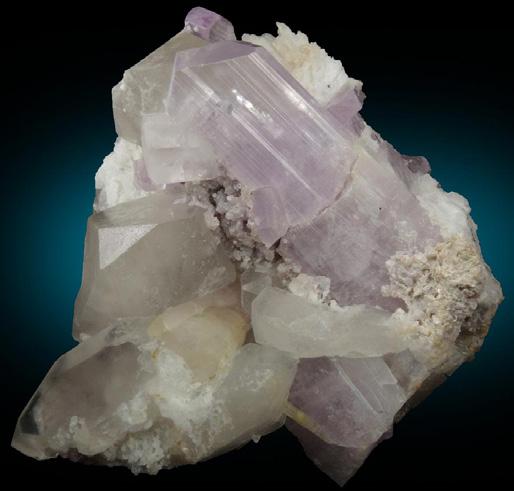
As a consequence of crystallizing almost exclusively in Li-rich granitic pegmatites, lepidolite finds itself in the company of mineralogic superstars reflecting enrichment of incompatible elements like B, Be, F, P, Mn, Ga, Rb, Nb, Sn and Hf (London, 2017). In this amazing photograph, lepidolite is the scraggly material in the center and at the right edge. The striated, lilac-colored spodumene (var. kunzite) at the top left edge is world class, in spite of the crack. Quartz is prominent as the point at the lower left corner and the lighted, triangular pyramid face at mid left. Between the kunzite and the quartz pyramid face is a clear, hexagonal beryl crystal. The yellowish material to the lower left of the central lepidolite is light-colored elbaite tourmaline. Photo used with permission from John Betts Fine Minerals
richest sources of Li to the world market.
Lithium has a great many commercial applications that include metallurgy, glassmaking and ceramics, aerospace and batteries. Lithium is listed as a critical element by the United States Geological Survey (Bradely et. al., 2017). Added to ceramics, Li reduces thermal expansion and contraction promoting stability. Li is added to high-performance lubricants and greases. Li is used in specialized refrigeration system brines. Lithium is an alloying agent added to aluminum and magnesium metal to increase elasticity and high-temperature strength (Kesler, 1994; Klein and Philpotts, 2013). Lithium carbonate and related


production company
confluenceresources.com
Confluence Resources is an upstream exploration and production company confluenceresources.com


Splendid example of the scalar/botryoidal (ball peen) habit of lepidolite from Tarquaral, Minas Gerais, Brazil. 5 cm across. Photo used with permission from John Betts Fine Minerals
Color-zoned topaz crystals poking out of white albite and light pink lepidolite from the Skardu District, GilgitBaltistan, Pakistan. Largest crystal is 34 mm in long dimension. Photo used with permission from John Betts Fine Minerals


compounds have been used since the 1940s to control bipolar disorder. Lithium, of course, is also an important component of rechargeable batteries that are experiencing a gigantic increase in growth due to applications in electric vehicles (EVs), cell phones, watches and power banks (Srivastava et. al., 2023). Still (2016) makes the point that the search for lithium is the modern equivalent of a gold rush. Simply, lithium is a necessary ingredient to feed the insatiable hunger for electronic technology and electric and hybrid vehicles as we march into the middle of the 21st century. Although roughly 80% of lithium production to the world market stems from mining Li-brines from evaporite basins, the ongoing surge in demand for more Li is certain to require increases in mining Li-bearing pegmatites.
Although lepidolite is not a common mineral, it is known from worldwide occurrence. Lepidolite is mined from major occurrences in: the Ural Mountains of Russia; Coolgardie, Western Australia; Saxony, Germany; Czechia; Honshu, Japan; Mozambique; Madagascar; Varutrask, Sweden (Farndon and Parker, 2011). In the United States, lepidolite is known from Oxford and Auburn, Maine, Middletown, Connecticut; King’s Mountain, North Carolina; Pala, San Diego
Massive, lilac-colored lepidolite aggregate from Black Mountain, Rumford, Oxford County, Maine. 8 cm in long dimension. Photo used with permission from John Betts Fine Minerals
County, California; Dixon, New Mexico and the Black Hills of South Dakota (Klein, 2002; Bonewitz, 2013). Lepidolite – supporting cast member for the mineral collector’s Hall of Fame!
• https://en.wikipedia.org/wiki/Lepidolite
• https://www.mindat.org/min-2380.html
• https://www.minerals.net/mineral/lepidolite.aspx
• https://geology.com/minerals/lepidolite.shtml
Bonewitz, Ronald Louis, 2005, Rock and Gem: The Definitive Guide to Rocks, Minerals, Gems and Fossils, New York, New York: Dorling-Kindersley Limited, 360 pp.
Bradley, Dwight C., Lisa L. Stillings, Brian W. Jaskula, LeeAnn Munk, and Andrew D. McCauley, 2017, Lithium – Chapter K, Critical Mineral Resources of the United States – Economic and Environmental Geology and Prospects for Future Supply, United States Geological Survey Professional Paper 1802-K, 34 pp. https://doi.org/10.3133/ pp1802K
Chang, Luke L. Y., 2002, Lithium Minerals, in
Industrial Mineralogy: Materials, Processes, and Uses, Upper Saddle River, New Jersey: Prentice Hall, 206-217.
Farndon, John and Steve Parker, 2011, The Illustrated Encyclopedia of Minerals, Rocks & Fossils of the World, Leicestershire, U.K.: Anness Publishing, Ltd, 512 pp.
Johnsen, Ole, 2002, Minerals of the World: Princeton University Press, Princeton, N.J. 439 pp.
Klein, Cornelis, 2002, The 22 nd Edition of the Manual of Mineral Science: New York, John Wiley & Sons, Inc., 641 pp.
Klein, Cornelis and Philpotts, Anthony, 2013, Earth Materials – Introduction to Mineralogy and Petrology: New York: Cambridge University Press, 536 pp.
London, David, 2017, Reading Pegmatites: Part 3 – What Lithium Minerals Say, Rocks & Minerals, 92:2, 144-157. https://DOI.org/10.1080/0035752
9.2017.1252636
Mindat, 2024, Lepidolite, website https://www.mindat.org/min-2380.html Accessed 1/24/24.
Nesse, William D., 2004, Introduction to Optical
Mineralogy, 3 rd Edition: New York: Oxford University Press, 348 pp.
Parker, Ronald L., 2017, Spodumene – The Pegmatite Giant, Outcrop, the Monthly Newsletter of the Rocky Mountain Association of Geologists, 66(6): 22-26. https://issuu.com/rmagdenver/docs/ oc_june2017-v2/22
Srivastava, Varsha, Venla Rantala, Parisa Mehdipour, Toni Kauppinen, Sari Tuomikoski, Anne Heponiemi, Hanna Runtii, Pekka Tynjala, Glaydson Simoes Dos Reis and Ulla Lassi, 2023, A Comprehensive Review of the Reclamation of Resources from Spent Lithium-Ion Batteries, Chemical Engineering Journal 474 (2023) 145822
https://doi.org/10.1016/j.cej.2023.145822
Still, Ben, 2016, Lithium: One to Watch, in The Secret Life of the Periodic Table – Unlocking the Mysteries of all 118 Elements, Buffalo, N.Y.: Firefly Books, Inc, pp. 38-39.
Wenk, Hans-Rudolf and Bulakh, Andrei, 2004, Minerals – Their Constitution and Origin: New York: Cambridge University Press, 646 pp.
Scott Knight with Castlewood Canyon State Park from Parker, Colorado
Shannon Rentz with the U.S. Department of Interior from Englewood, Colorado
Luke Fidler with XCL Resources from Houston, Texas
Whitney Worrell is a Student at the University of Wyoming, in Laramie, Wyoming
Kyle Reamer with Geosyntec Consultants from Colorado Springs, Colorado
Russell Frommer with K2MJ Resources, LLC from Morrison, Colorado
Cole Archer with Brierley from Lakewood, Colorado
Natalie UschnerArroyo from Lakewood, Colorado
Celina Will with SLB from Denver, Colorado
Christopher Dorion with SLB from Castle Rock, Colorado
Derek Ensign is a student in Littleton, Texas

